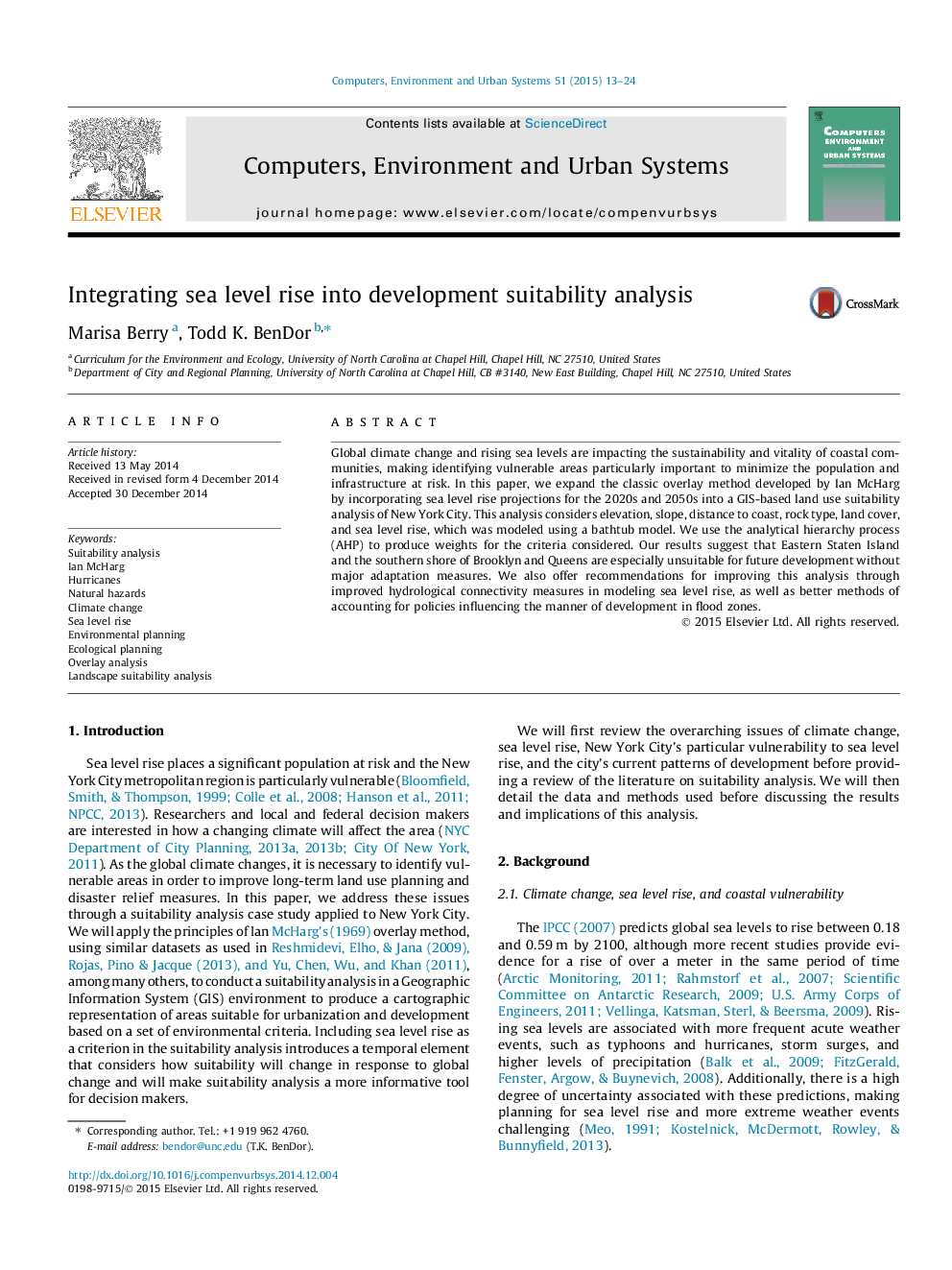| Article ID | Journal | Published Year | Pages | File Type |
|---|---|---|---|---|
| 6921976 | Computers, Environment and Urban Systems | 2015 | 12 Pages |
Abstract
Global climate change and rising sea levels are impacting the sustainability and vitality of coastal communities, making identifying vulnerable areas particularly important to minimize the population and infrastructure at risk. In this paper, we expand the classic overlay method developed by Ian McHarg by incorporating sea level rise projections for the 2020s and 2050s into a GIS-based land use suitability analysis of New York City. This analysis considers elevation, slope, distance to coast, rock type, land cover, and sea level rise, which was modeled using a bathtub model. We use the analytical hierarchy process (AHP) to produce weights for the criteria considered. Our results suggest that Eastern Staten Island and the southern shore of Brooklyn and Queens are especially unsuitable for future development without major adaptation measures. We also offer recommendations for improving this analysis through improved hydrological connectivity measures in modeling sea level rise, as well as better methods of accounting for policies influencing the manner of development in flood zones.
Keywords
Related Topics
Physical Sciences and Engineering
Computer Science
Computer Science Applications
Authors
Marisa Berry, Todd K. BenDor,
